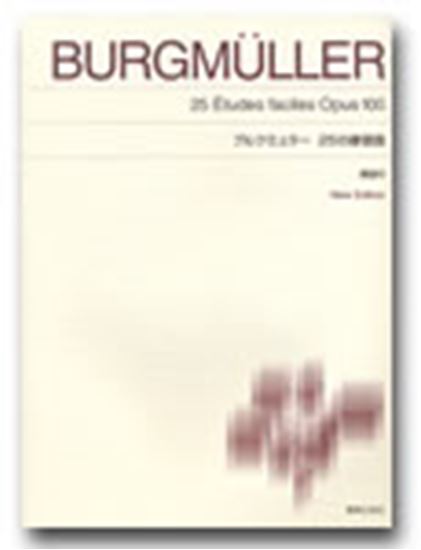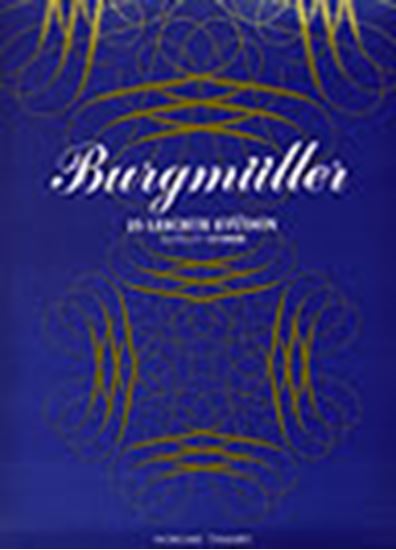Burgmüller, Johann Friedrich Franz : 25 Etudes faciles et progressives, conposées et doigtées expressément pour l'étendue des petites mains Tendre fleur Op.100-10
Work Overview
Genre:etude
Total Playing Time:1 min 30 sec
Copyright:Public Domain
Additional Notes:表記ゆれの例: かわいいお花
Commentary (3)
Author : Sato, Takashi
Last Updated: January 31, 2022
[Open]
Author : Sato, Takashi
This is a delicate piece written almost entirely in two-voice texture. Short two-note slurs, which also appeared in No. 5 'Innocence,' are frequently used in Classical works by composers such as Mozart. Although the second note of each slur has a staccato, it should not be played in a detached or bouncy manner. Play as if gently cherishing each individual petal.
Performance Points (Original Tempo: ♩ = 152)
This simple piece is an etude for training the 'ear'. From measure 5, the left hand begins by imitating the right hand slightly delayed, eventually developing independent motion. Since the peaks of the phrases are subtly offset between the two hands, listen carefully to each. At the cadences in measures 8 and 24, the right hand divides into two voices; listen not only to the upper voice but also to the inner voice that descends as D - B - A - G - F#. For the ornamentation in measure 13, practice first without it, then incorporate it while maintaining the same lyrical quality.
(From To-on Edition 'Burgmüller 25 Etudes' (NS70))
Author : Iida, Arisa
Last Updated: March 15, 2018
[Open]
Author : Iida, Arisa
Musical example provided by: Ongaku no Tomo Sha
Author : Ooi, Kazurou
Last Updated: January 31, 2019
[Open]
Author : Ooi, Kazurou
This piece requires careful attention to avoid harsh, sharp, or loud sounds. This is a general instruction. Now, let's examine each section.
Measure 1
Play without pedal and observe the articulation. In the Zen-On edition, the two eighth notes per beat in the right hand are marked with legato and staccato. Therefore, play them as marked, but be very careful that the staccato notes on the off-beats do not become louder than the notes on the downbeats.
Then, apply a very slight crescendo within the p dynamic (to an imperceptible degree) to reach the joyful emotion of Measure 2.
Measure 2
Use the pedal to create warmth, but be creative with the pedaling timing. The pedal should be pressed simultaneously with the E on the off-beat after playing the melodic note F# on the downbeat of beat 1. This measure contains the dominant seventh chord of D major, A-C#-E-G. Since only F# is a non-chord tone, avoiding it when pedaling will allow for a clean resonance.
Measure 3
Similar to Measure 1, no pedal.
Measure 4
Same as Measure 2.
B Section (from Measure 9 onwards)
This section begins mezzo forte. Measures 9-10 and 11-12 are identical in both notes and rhythm. If Measures 9-10 are mezzo forte, then Measures 11-12 could be played mp.
Measures 15-16 (Diminuendo)
Dimin. is written in Measure 15, but it is unclear from where this diminuendo should begin. Hypothetically, if Measures 13-14 are played at around mezzo forte, then the dimin. in Measures 15-16 would make sense. Looking at the entire piece, the chordal accompaniment appears only in Measures 13-14. It would not be inappropriate for the volume to be slightly louder here.
PTNA & Partner Channel Videos(21items) View More
Sheet MusicView More
Scores List (27)

(株)東音企画(バスティン)

(株)東音企画(バスティン)

(株)東音企画(バスティン)

(株)全音楽譜出版社

(株)シンコーミュージックエンタテイメント

(株)ドレミ楽譜出版社

(株)音楽之友社

KMP(ケイ・エム・ピー) ケイエムピー

(株)ドレミ楽譜出版社

ハンナ(ショパン)

(株)ヤマハミュージックエンタテインメントホールディングス

デプロMP

(株)ドレミ楽譜出版社

(株)全音楽譜出版社

(株)ドレミ楽譜出版社

カワイ出版

カワイ出版

デプロMP

(株)ヤマハミュージックエンタテインメントホールディングス

デプロMP

(株)音楽之友社

(株)共同音楽出版社

(株)ヤマハミュージックエンタテインメントホールディングス

(株)音楽之友社

Neil A. Kjos Music Company




















